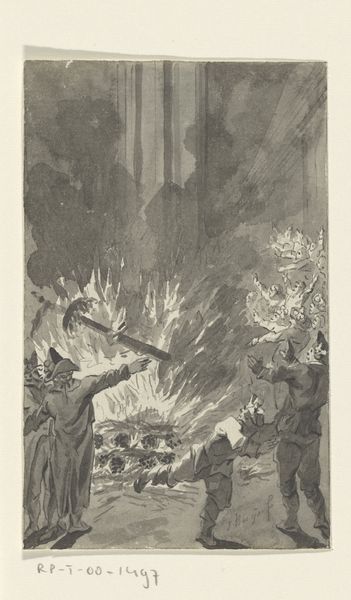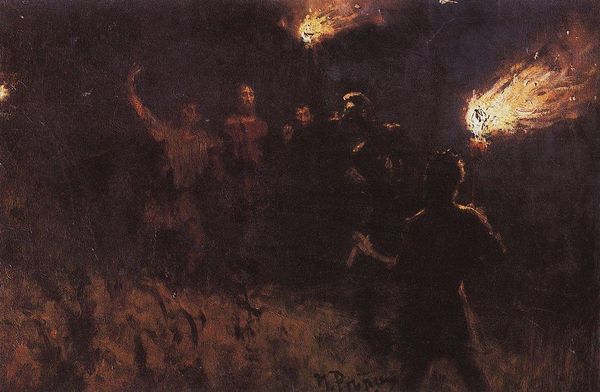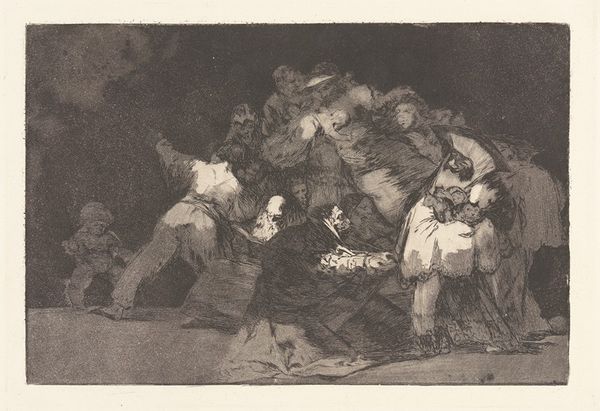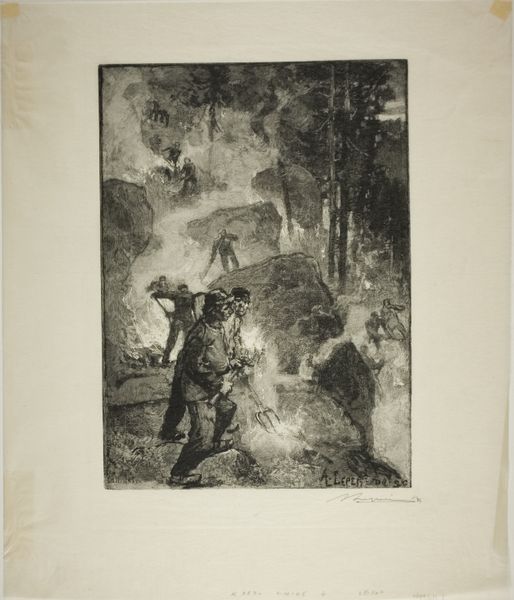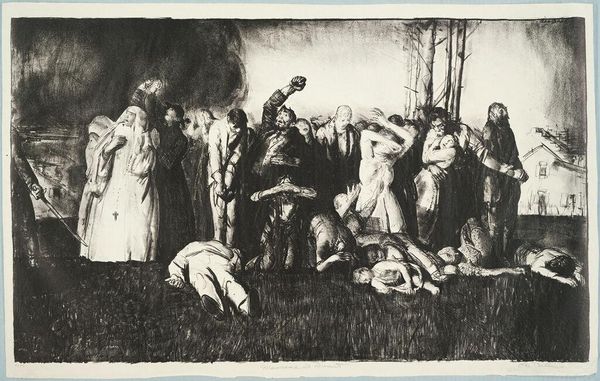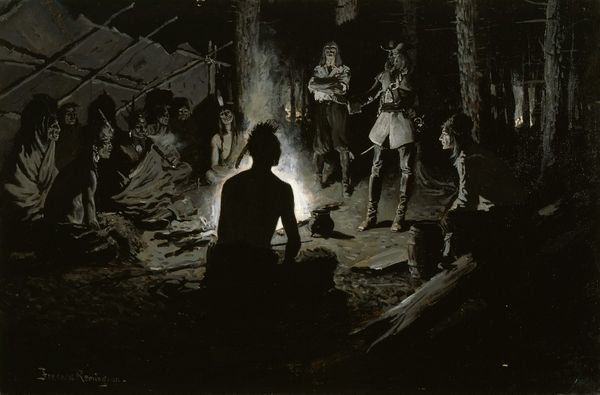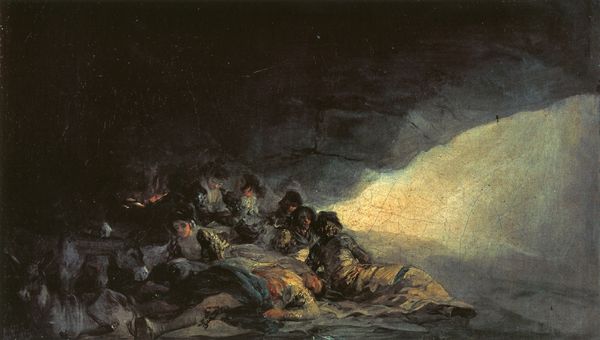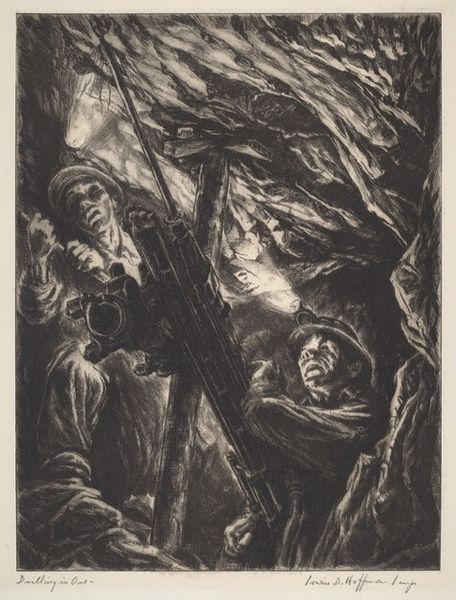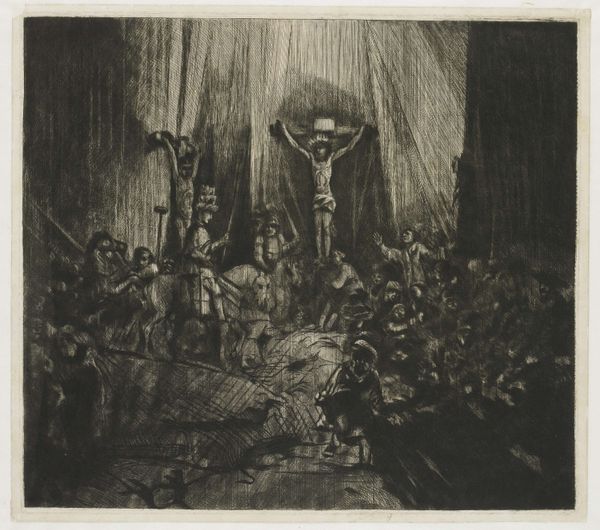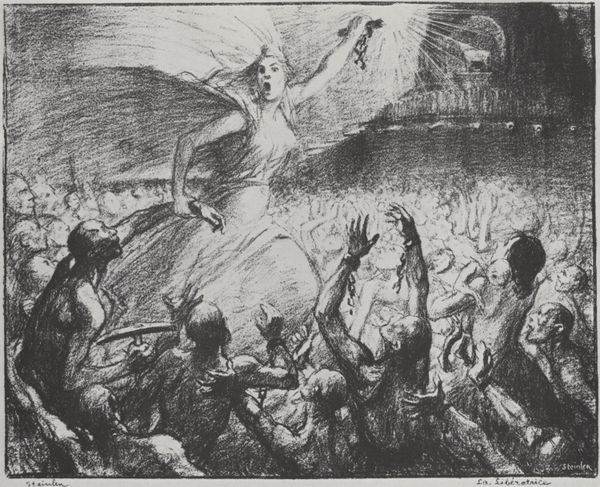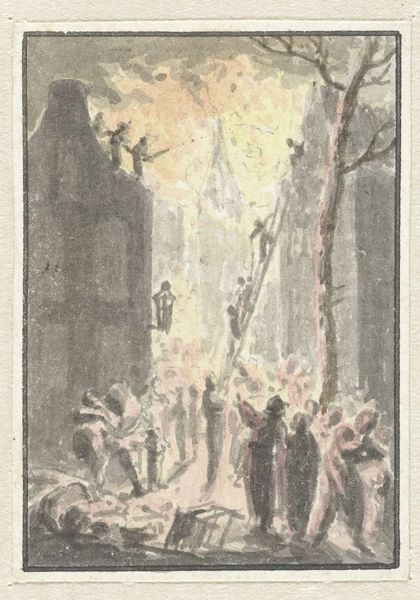
drawing
#
pencil drawn
#
drawing
#
amateur sketch
#
pencil sketch
#
charcoal drawing
#
charcoal art
#
pencil drawing
#
surrealism
#
charcoal
#
graphite
#
fantasy sketch
Copyright: Public Domain: Artvee
Editor: This is George Bellows' drawing, "The Law Is Too Slow," created in 1923, seemingly in charcoal and graphite. It depicts a horrifying scene. There's a sense of frenzied violence, cloaked in shadow. What historical narratives does this work bring to mind for you? Curator: Immediately, it evokes the horrifying history of lynching in the United States, particularly during the early 20th century. Bellows was known for his social realism, and this piece speaks to the failure of the legal system to protect African Americans from mob violence. What strikes me most is the title itself, a chilling indictment of the systemic racism that enabled such acts. Editor: The figures in the background are almost ghostlike, observing passively, while the central figure appears chained. Was this passivity common? Curator: Unfortunately, yes. The power of these events lay not just in the act itself but also in the public spectacle, often involving entire communities. Consider how the widespread circulation of photographs of lynchings normalized racial terror. Bellows' work serves as a stark reminder of this public dimension of private hate. The figures almost become a part of the scenery. How do you feel Bellows utilizes light and shadow to heighten the emotional impact? Editor: The light is almost cruelly highlighting the victim. It creates such a stark contrast, as if focusing all the attention on him while letting the perpetrators stay in the dark both literally and morally. Curator: Exactly. This play of light and shadow implicates not only the perpetrators but also the institutions that failed to provide justice and protection. The darkness hides complicity. Reflect on how art like this challenges us to confront uncomfortable truths about our past and its continued legacy in the present. Editor: It is a powerful reminder that art can be a form of historical record and social critique, even when deeply unsettling. I understand more clearly how it challenges me to consider institutional complicity. Curator: Precisely. I hope visitors now realize that the political nature of art and social activism go hand in hand.
Comments
No comments
Be the first to comment and join the conversation on the ultimate creative platform.
